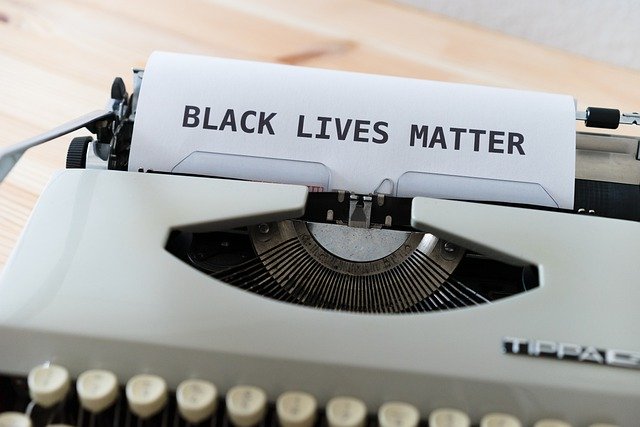Do Black lives truly matter in your organization?
Today, most organizations offer diversity training, and I applaud them for this. But clearly, this is not enough to counter the racism that exists in our organizations and society today.
Racism isn’t just about being racist. And it’s not something that just bad people do. Racism is a system of oppression—intentionally or not. And it hurts everyone.
You see, part of being raised as a white person in our society is to be raised functionally illiterate when it comes to racism. To understand the collective dimensions of racism, and how different groups of colors get set-up differently, is a life-long process. It’s important to learn and understand those histories, stereo-types, and different experiences.
All people who are not perceived as white continue to experience racism. They experience it in shared ways, in ways that are unique to their group, and their position to whiteness.
However, there is something profoundly anti-black in our culture. According to Dr. Robin DiAngelo, author of White Fragility (Beacon Press, 2018), “In the white mind, Black people are the ultimate racial other.” Anti-blackness cuts across all groups; it is state sanctioned discrimination against African Americans.
We need to learn how to listen better, learn better, and take better action to correct the systems that support racism. Leaders in organizations are in excellent position (and have a responsibility) to model ways to become aware of prejudices and discrimination, and work to eliminate racism, beyond their organization. Ultimately, this will strengthen our businesses, those we serve, and our entire society. But most importantly, it’s the right thing to do. Black lives matter.
Language Matters: Understand Key Terms
Based on her research and experiences regarding racism, DiAngelo shares how often times, when our assumptions about race are challenged, our reactions are counterproductive. We become defensive. Instead, we can learn to identify these responses and engage in open discussions where we really listen and learn. Then, we can take action.
Of course, talking about any issue requires an understanding and agreement on key terms. Here are a few to get us started:
Prejudice: not the same as racism. It is an internal act, sometimes conscious, most often not. Everyone has prejudice and prejudges people based on a multitude of factors, including (but not limited to) gender, race, and religion.
Discrimination: an external act of prejudice. It often takes the form of excluding, avoiding, ridiculing, favoring, segregating, trusting, or attacking.
Institutional Power: the ability to disseminate your world view to everyone, and to shape how they see themselves, how they see you, and how they see themselves in relationship to you.
Racism: a system of oppression, not an event.
Racist: the traditional definition is an individual who consciously does not like people based on race, and is intentionally mean to them. The three key words are: individual, consciously, and intentionally. This definition actually protects the system of racism. It makes it virtually impossible to talk to the average white person about the inevitable absorption of a racist world view that we get from living in a culture in which it is infused and embedded across all its institutions. This definition is the root of virtually all white defensiveness on this topic. When this is your definition, and someone suggests you may have said or done something racist, the response is to defend your moral character.
Systemic racism: the collective racial prejudice backed by legal authority and institutional control. It is embedded in media, family, religion, education, language, economics, and criminal justice. Systemic racism is embedded in cultural definitions of what is normal, real, correct, beautiful, and valuable.
White supremacy: a belief that white is the human ideal. While it includes extremists (Neo-Nazis) it is also a highly descriptive sociological term for the society we live in where white people are elevated as the ideal for humanity, and everyone else is a deficient version of that.
Whiteness: all the unnamed elements that together reproduce and protect white supremacy
White privilege: one of the outcomes of white supremacy. It is not about wealth, or lack of accomplishment, rather it is a built in advantage, separate from effort and level of income. White privilege is greater/better access to power and resources.
White fragility: what surfaces when any of the above is acknowledged or questioned.
“White fragility is the inability to tolerate racial stress. Racial stress is triggered when our positions, perspectives, or advantages are challenged. White fragility functions to block the challenge and regain white racial equilibrium. It is not weakness per se; it is a powerful means of everyday white racial control as it leverages historical and institutional power to maintain positions.”
Dr. Robin DiAngelo
What do you think? How do Black lives matter in your organization? I’d love to hear from you. I can be reached here, on LinkedIn, or give me a call: 561-582-6060.

Did You Enjoy This Article?
Join thousands of other smart business owners like yourself & get our Proffittable Times newsletter.
It's filled with actionable content you can apply immediately.
Sign up now to get started!
– Coach Nancy










